Turning the Page
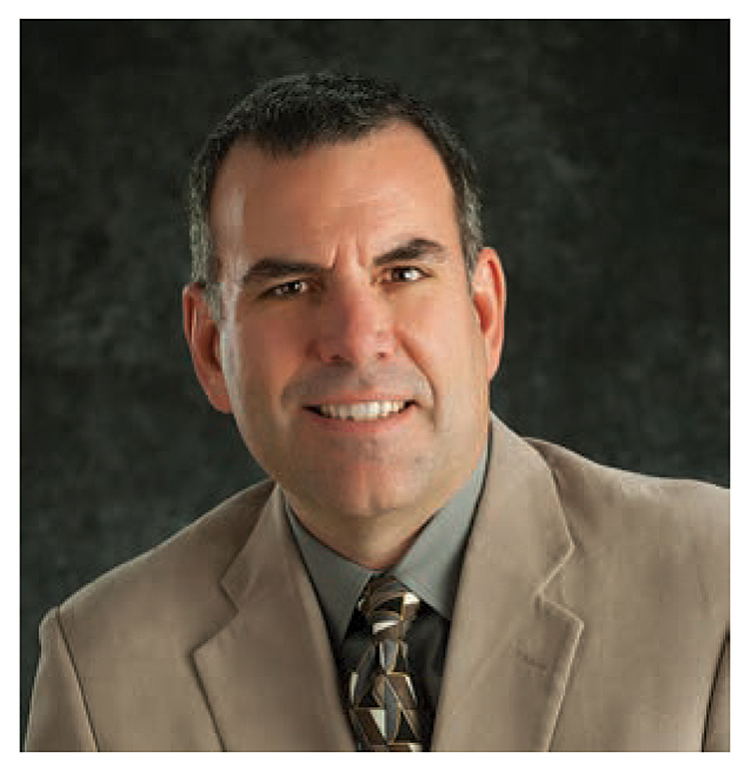
jbaty@cfaconcretepros.org
When was the last time you read a really good book of the page-turner variety? Each page is turned more quickly than the previous one. An anticipating pace races you deeper into the plot, the action, the historical moment, or the truth you are seeking. With that picture in mind, consider the page turning taking place in your business right now.
Non-essential has turned into essential. Ample work has turned into more-than-enough work. A pandemic-impacted workforce has begun turning into a vaccinated population. Winter has sharply ended with the promise of spring. All of these are examples of positive page turns you have all made recently. You’ve learned; we’ve learned; together we have endured.
You find yourself at the start of a new chapter. Facing you are storylines that are among the most important of your recent years. Availability of materials is challenging your productivity and your effective, if not competitive, pricing. These include steel, wood, and cement. Steel-form ties, the most recent shortage, threatens the pace of housing construction and the overall economy. Your workforce is evolving as more people gain the confidence to return to work, yet the availability of more laborers has not yet led to quality interviews. As you begin to turn the pages, you are met with disappointment, dissatisfaction, maybe even frustration.
Yet the threads of hope for new opportunity remain a part of your quickening pace. What you need now is a page to turn in your favor. Where will your next inspiration come from? How will you set at arm’s length frustration and anxiety and replace them with a sustaining energy and then drive through the present chapter?
Let me suggest that inspiration can come through this Association and your peers. As I look forward, in my immediate future is a CFA board meeting in mid-April. During this meeting, your leaders will continue to direct and affirm development goals and platforms from which membership growth can take place. Among the big-ticket items are a fully implemented, on-demand Learning Management System; growth of staff to serve and connect members to thought leadership; increasing active participation in mixed networking groups; establishing areas of expertise and proficiency; and facilitating easier networking for members.
Looking beyond these development goals, the pages turn quickly to Convention this summer, where we will return to an in-person, aggressive offering of business-changing education and networking, desired by so many after more than 700 days since our last in-person convention. Charleston will be the location of the next great CFA event for those who can make it there. For those who cannot, we have learned far too much from previous pages to let go of the convenience of virtual gathering, and we will offer a hybrid way for you to engage with the same learning and experience unique networking.
Now is the time for you to pick this book up and stay with it. Come and see why the CFA is the right story for this right time, needing you to be part of the content on the pages.
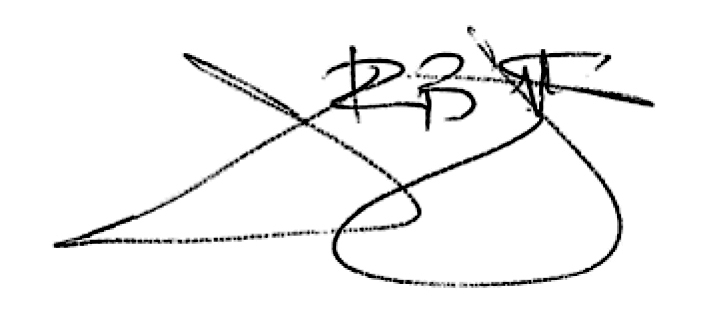
Contraction Joints in Residential Slabs Using a New Method
By Harvey Haynes, Haynes & Associates LLC; Oakland, CA
Introduction
The cracking of concrete slabs is unsightly and has long been a frustration for concrete contractors who receive complaints and callbacks from homeowners. Concrete, by its nature, will contract due to thermal cooling and drying shrinkage. This material behavior causes concrete elements to decrease in volume. When these elements are restrained from moving to a smaller size, tensile stresses build and concrete cracking may occur.
ACI 3321 provides minimum construction requirements for controlling cracks in slabs on ground. The key word here is “controlling” — cracks cannot be eliminated, but concrete contractors can minimize their frequency and size. It is a choice between having cracks at known locations, which are at contraction joints, and having the cracks more visible at random locations. The objective is to have the cracks occur at contraction joints.
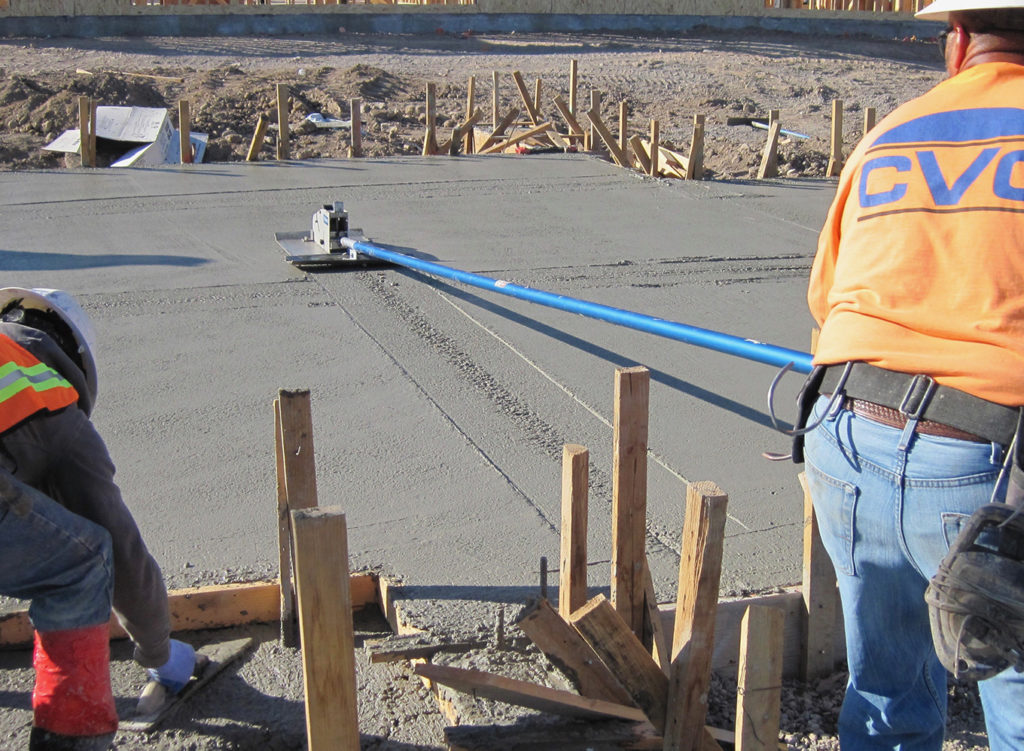
The term “contraction joint” may be new to some. It is the preferred term by the ACI — used in place of the common term “control joint.”
The criteria in ACI 332 for contraction joints are summarized as follows:
(a) Joints shall be formed, sawed, or tooled.
(b) Joint spacing shall follow limits given in a table.
(c) Slab sections defined by contraction joints shall have an aspect ratio no greater than 1.5.
(d) Joint depth shall be a minimum of 1/5th of the slab thickness for inserted, tooled, or early-entry sawed joints, but not less than one inch deep or 1/4th of the slab thickness for conventional wet or dry sawed joints in hardened concrete.
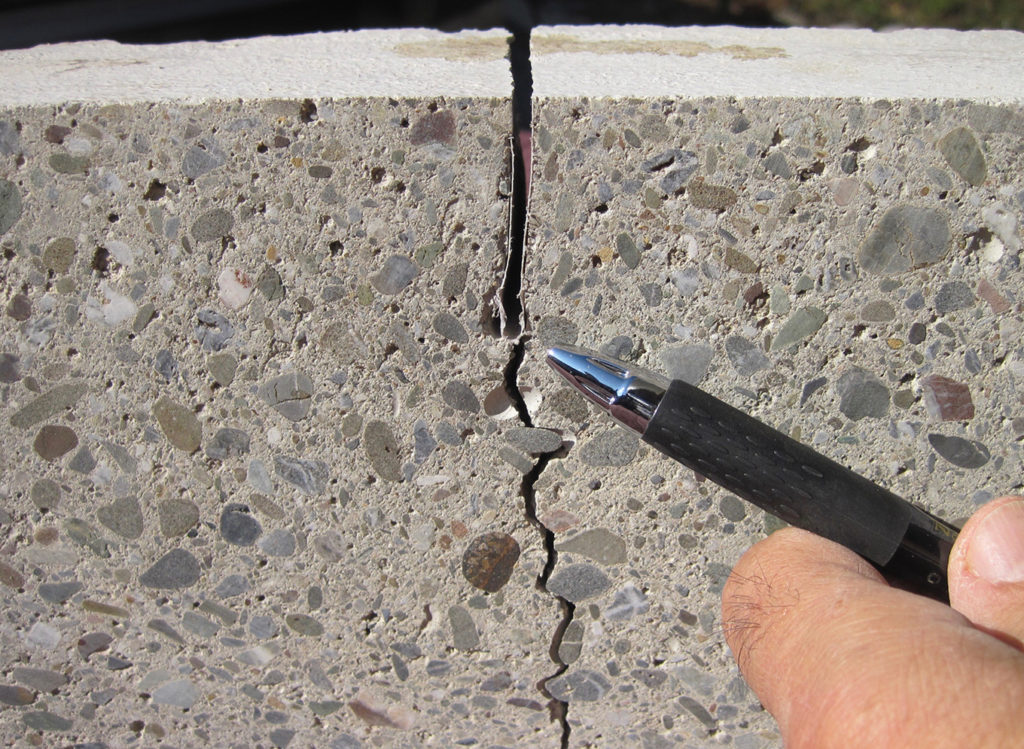
The commentary to the contraction joint section says that experience with early-entry or conventional saw cutting of concrete tends to limit the development of cracks to the contraction joint location. This statement has been the conventional view, but times are changing. Today, saw cutting concrete is more labor intensive and expensive due to OSHA restrictions. The health risks of airborne silica are so great that OSHA issued a new standard, 1910.10532, in 2017 to advance the protection of all employees exposed to airborne silica. Hydrated cement paste, and sometimes aggregate in concrete, contain silica. When concrete is abraded and the dust is airborne, the silica can enter the lungs, produce inflammation, and cause a form of lung disease called silicosis. Satisfactory compliance with this OSHA standard requires a combination of equipment-shrouding technology, respirator masks for employees, and in some cases health monitoring, to maintain safe exposure levels. These actions can be expensive, time consuming, and problematic in their effectiveness.
Analysis of Contraction Joint Methods
There are limitations to each of the three methods mentioned in ACI 332. Sawed joints have been discussed in light of the silica-dust problem and expense. Tooled joints are limited by the depth of groove and by the size of slab (however, tooled joints are the common method for small slabs, such as sidewalks, patios, and driveways). Inserts are applicable to medium-sized slabs, such as residential house slabs. A common insert method involves installing strips of rigid plastic into fresh concrete. This method has limitations because, in manually installing the strips, it is easy to place them too high or at an angle in the concrete, and it is difficult to maintain straight lines because each strip is 10 feet long.
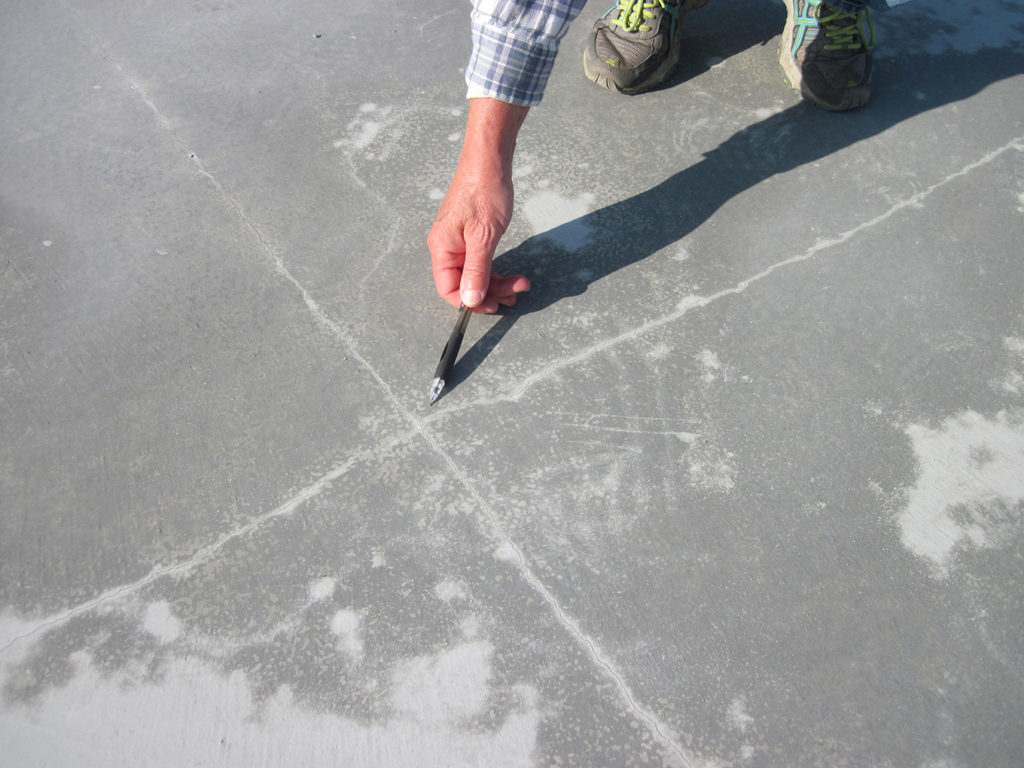
An objective study of the various methods for use in residential house slabs shows that inserts have advantages over the other methods.
- Insert joints do not produce silica dust. The potential of being fined for an OSHA violation because of silica is eliminated.
- Insert joints are installed in fresh concrete, eliminating the problem of timing. This is significant when compared to sawing joints, where you can act too early, which will ravel edges, or too late, which means cracks have already appeared. Technically, joints installed in fresh concrete have the best chance of performing their intended function, that of mitigating random cracks.
- The installed cost of inserts is considerably less than that of sawed joints.
This analysis reveals that, in their efforts to improve on current methods, concrete contractors should work with the insert approach.
Innovation
A new method exists to install contraction joints in residential slabs. The approach is to embed a strip of polymer tape into fresh concrete using a manually operated tool that is pushed and pulled across the slab. This method has the trade name of Trak Joint®3 (Fig. 1), and several advantages set this method apart from other contraction joint methods.
- The tape adheres to the walls of the crack (Fig. 2) and therefore blocks rainwater from wetting the subbase soil.
- The tape retards moisture transition moving from the ground to under-floor coverings.
- The tape provides a curing environment for the concrete faces in the joint.
- Should epoxy or polyurethane be used to fill the joint, less material is needed because the tape creates a bottom to the joint, and the width of the joint is narrow.
A possible downside to the method is the final appearance of the joint, which is that of an intentional crack (Fig. 3). After thermal contraction and drying shrinkage, however, the width of the joint will be a maximum of 1/16th inch, if joint spacing is done properly. For residential house slabs, floor covering is typically used, which hides the joints.
Summary
The insert method of forming contraction joints improves the practice of mitigating random cracks in slabs. The Trak Joint method was unveiled during the Concrete Foundations Convention 2019 in Denver, Colorado. The Trak Joint method’s reliability for minimizing random cracks is a major advantage, as is minimizing workers’ high-risk exposure to silica dust and preventing a citation from OSHA. Contractors have found that using Trak Joints has a significant cost savings over the other contraction joint methods.
References
- ACI 332-20, Code Requirements for Residential Concrete, American Concrete Institute. Farmington Hills, MI, 2020.
- OSHA 1910.1053, Respirable Crystalline Silica.
- www.trakjoint.com.
The Lowdown on the Letdown:
Why Some People Drop the Ball and What To Do About It
By Kate Zabriski
He didn’t get the shipments out – again! Makes me crazy. That guy never follows through.
She said I’d get a promotion, so where is it? I’ve been waiting for three years.
“All talk and no action” – that phrase describes that group in a nutshell. They pay lip service to teamwork, but they never pull their weight.

From time to time, everyone misses a deadline, forgets an obligation, or fails to live up to meet a commitment. We are human, and it happens. For most of us, failure is followed by an immediate effort to right the situation.
Problem solved, right? Not so fast. “Most of us” excludes a special cohort: those who chronically disappoint and routinely fail to meet their obligations. They say one thing and do another, they agree to deadlines they have no intention of meeting, and they commit to deliverables that will never materialize.
If we are lucky, once we identify members of this tribe, we can put a healthy distance between ourselves and them. If not, there are some proven strategies we can use to retake command, push for greater accountability, and regain control of our sanity.
Accountability Strategy One: Confirm a Shared Understanding
Be sure you and the other person have a shared understanding of your expectations. Does the fellow shipping your packages understand what is required? If so, how do you know? Did he say “yes” in a way he had hoped you would figure actually meant “no”? Did he agree because you are in a position of authority, and he did not want to disappoint you in the moment? Did he know that you meant today and not just sometime soon? Before taking other actions, it is important to make sure you and the other person have a shared understanding.
From a Contractor’s Perspective (Jason Ells) – I refer to this as “eliminating Mutual Mystifications.” Mutual Mystifications are the things that we all say that leave both parties mutually mystified. For example, if a customer said that he or she was looking for straight and level walls, we might say, “Oh, sure, our walls are always straight and we use a laser on our footing to make sure they are level.” But the real questions is, what does “straight” or “level” mean to the customer? Is it the same definition for “straight” and “level” that you use? Or, for another example, take a conversation with a new employee about working long, hot days. My guess is that employees who do not come from a previous construction job may not share your definition for “long” or “hot.” The key to eliminating Mutual Mystifications is to identify them and ask clarifying questions or make clarifying statements to be sure that everyone is on the same page. For example, “When you say straight and level, what do you have in mind?” or, “When I say ‘long and hot days,’ let me clarify…”
Accountability Strategy Two: Look for Roadblocks
Once you are sure that you and the other person have a similar grasp of the requirements, look for roadblocks. Is the promotion you have looked for no longer available because of circumstances outside of the promiser’s control? Does the person boxing shipments have someone else demanding his time? If you discover it is the latter, your frustration is focused on a symptom and not the root cause of the problem. Take the time to do a little digging. You need to focus your effort on changing the underlying belief and make a case for your point of view.
From a Contractor’s Perspective (Sean Smith) – We have a foundation that has to be poured today, no matter what, according to the customer and our sales person’s understanding. A conversation with the production team commences: Do we have the appropriate man power today for this job? Can we get panels to the job prior to our crew’s arrival? Can we get all of the additional materials necessary to place concrete for that job? Can we schedule our inspections so that we will have enough time to get the concrete placed safely? Can we get a pump and concrete lined up for the necessary time? Team, are there any other questions that we need to answer before communicating our plan to the customer? IF we have been able to identify most of the variables and provide answers to the seen roadblocks then we can achieve the goal. That does not mean there will not be additional challenges down the road.
Accountability Strategy Three: Break Steps Into Smaller Pieces
Even with a shared understanding and no obvious roadblocks, sometimes people do not follow through because they get overwhelmed. When this happens, it may make sense to break the task into smaller pieces. Bobby, how many packages do you think you can have ready by 1:00? Great, I’ll check in with you then to see where we are. It’s important that we meet our shipping deadlines because our customers count on us to live up to our promises. When we meet this afternoon, we can see where you are. How does that sound?
From a Contractor’s Perspective (Ken Kurszewski) – We talk about the power of incremental improvements all the time in our organization. Any major improvement is not going to happen overnight. A 50% improvement is going to end up being a bunch of 1-2% improvements over time. This strategy is present in so many areas of our personal and professional lives. Losing 20 pounds turns into losing 1 pound 20 times. Pouring 10 foundations turns into pouring 1 foundation 10 times. Building a house turns into hiring several different tradespeople to each take care of their area of expertise. Keep asking yourself how you will achieve the big task and typically the answer is through smaller tasks. One recent example is an experience we had with one of our project managers. He wanted a quarterly goal of eliminating callbacks. A lofty goal that is likely not going to be achieved in three months. I asked him what steps he would take to achieve the goal. One of his answers was to spot-check jobs with his crews. He oversees five foundation crews, so there was very little chance he would be able to spot-check every job. Eventually, he settled on spot-checking two jobs per week. A smaller, achievable goal that will take him one step closer to eliminating callbacks.
Accountability Strategy Four: Make Use of Upfront Contracts
If there are no roadblocks preventing the other person from following through and small steps are not solving the problem, it is time to explore up-front-contract language. If you can get these shipments out by 3:00 today, I can mark your work as complete. If your team can meet the deadlines we’ve agreed to, we will have what we need to move the project to the engineering team. The pattern is simply, “if you/your team can, then I/we will.” If you can clean the odd-numbered rooms, I can take care of the evens. That should split the work fairly.
From the Contractor’s Perspective (Vickie Paslay) – We strive to let our inspectors, engineers and ready mix companies know ahead of time, the day before if possible. We do this because we are respectful of their time and the other customers they have. When a crew is running late, due to weather, man power or site conditions it effects several other companies. By sitting those times the day before and putting it on the schedule board for all to see, we have let the foreman know what we expect for the day. Having our expectations known keeps wasted man hours to a minimum. I have found saying “to make sure we are on the same page what is your understanding of what I just said” this simple exchange has helped eliminate miscommunication and lets them know what is expected. . I always tell people you expect something from me and I expect something from you. You expect to get paid and I expect you to do the job to the best of abilities.
Accountability Strategy Five: Add a Next Step
If the upfront contract does not yield results, it is time to add an “else” component. If you can get these shipments out by 3:00 today, I can mark your work as complete. If I’m unable to do that, we can set up a meeting with Brian to let him know that we’re notifying customers that their packages will arrive late. If your team can meet the deadlines we’ve agreed to, we will have what we need to move the project to the engineering team. If we can’t move forward, we’ll have to escalate the schedule change to senior leadership, so that they are aware of the schedule slip.
From a Contractor’s Perspective (Mike Hancock) – Many times, in an agreement to perform work, we miss the little steps that help us correctly complete a task. It may be a contract for digging a hole, a contract for pouring footings, walls, floors, even waterproofing. The missed step in one phase of the process often leads to an added step for the next process. Adding an “else” statement helps ensure the steps are followed throughout the process. When raising children, we use the “else” statement a lot to achieve the goals we expect our children to meet. “Kym, if you don’t eat all your liver and broccoli, you cannot have desert.”
Sometimes foundation contractors tend to be a little more direct, with less thought in our “else” statements. “Look, dirt bag, I need wall ties right now or I’ll call the other guy.” And then you find out that the other guy doesn’t have wall ties ready either. By being direct, did a bridge get burned or did your needs get met?
When entering into a contract to perform work, laying out expectations then offering an “else” can be the difference between profit and loss on a job. If you or the builder hire excavation, an else statement can make a difference in your success. Your contract may read: “I need the hole dug to an elevation of 100 feet plus or minus 2 inches vertical or ‘else’ we will be required to add gravel at $500/ton plus $100/manhour to level the base.” The step of elevation verification during excavation will be met or else the excavator will have to deal with the consequence of added material and labor costs. Skipping steps when using an “else” statement can have negative consequences, particularly if they are ultimatums. It is beneficial to make sure the steps are small and that you present options showing how to succeed. “The basement shall be dug to an elevation of 100 feet or I quit” would be too extreme, preventing any option for success now or in the future.

Accountability Strategy Six: Consider Cutting Your Losses (If You Can)
From time to time, you may encounter a customer, colleague, or someone else who fails to follow through no matter what you do. When that happens, you may decide to cut your losses. Matt, when we spoke about arriving by 9:00, I explained that if you could make that happen regularly, you could continue your employment. For the last two weeks, you’ve arrived after 9:00 more than half the time. For that reason, we’re going to let you go.
From a Contractor’s Perspective (Mike Kana) – We take so much time (professionally and personally) trying to make the right choices on items we purchase, hires we make, clients to partner with, and every other “go or no go” in our life that it becomes difficult to cut your losses and move on. In some cases, it is very difficult to let someone go. When we go through the hiring process, I always rely on the idea of “slow to hire, quick to fire” (with caution). Sometimes, letting someone go is inevitable. You go through the correct management steps with the team member in question, trying to help them along and improve behavior, but with little success. At the end of the day, you feel that the organization could absorb the loss or find a candidate who would excel in this particular role and make the team stronger. Easier said than done, I know. But take the long-term approach and think, “What will this look like in another 30, 60, or 90 days? Is the situation going to get better, or am I making the same bad decision over and over again? Is this person a family member, friend, or long-time employee with close ties to the operation, making it difficult cut ties?”
Potentially, you can run the situation by someone outside of your core group. They could give you and honest opinion, hopefully confirming your thought process. Another idea would be to step away from the situation and try to relate to what the person is going through. Ask questions like, “Is there something going on outside of work that is causing this?” And, “What don’t I know and how could I help?” One more thought would be to put your ideas on paper and list objectively the pros and cons — seeing your thoughts might make the decision look very clear. You know what you need to do, you just need to do it.

Accountability Strategy Seven: Take Back Control
What if you are not in a position to fire someone or walk away from a relationship? In these situations, it is important to realize you are making a choice. I’m not getting the promotion. I know this. I’m going to continue to work here because it’s close to my house, and the schedule is flexible. Jane is chronically late, and she’s the owner’s daughter. Although I’ve brought the issue to his attention, he’s chosen not to act. I need a job, and this is the one I have now. I choose to work around this instead of walking out the door and having nothing.
From the Contractor’s Perspective (Amanda Kurt) – Ultimately, there is one thing we all have control over, and that is our own attitude. No matter the circumstance, we have the choice to take ownership of our thoughts, approach, and reactions.
For example, you may have one team that requires more supervision and makes more mistakes than other teams because the team is less experienced. You can choose to overcome this adversity by managing your own expectations and attitude, knowing there is a long-term benefit in working with this team.
Another example related to working with customers: Everytime you work for a specific home builder, the plans get revised at the last minute, making your work more difficult. The builder always pays on time, pays for extras, and contracts a lot of your work. You can choose to recognize that the benefits of the relationship outweigh the burden of the changes and make an effort to minize the disruption to your work.
And that is the lowdown on the letdown. Few people enjoy disappointment or appreciate someone who chronically drops the ball. Sometimes better communication can fix the problem, sometimes upfront contracts paired with consequences can make things right, and, if all else fails, a little positive self-talk can help.
About the Author:
Kate Zabriskie is the president of Business Training Works Inc., a Maryland-based talent development firm. She and her team help businesses establish customer service strategies and train their people to live up to what is promised. For more information, visit www.businesstrainingworks.com.
About the Contributing Contractors:
The contributing contractors are members of the Concrete Foundations Association Board, including: Jason Ells, executive vice president at Custom Concrete Company of Westfield, IN; Sean Smith, sales manager at MPW Construction Services of Wellington, OH; Ken Kursewski, president at Hottman Construction Company of Madison, WI; Vickey Paslay, chief operating officer at ABI Corp of Lee’s Summit, MO; Mike Hancock, president at Basement Contractors of Edmond, OK; Mike Kana, vice president of Business Development at Doggett Concrete of Charlotte, NC; and Amanda Kurt, partner at Kurk Inc. of Union Grove, WI. For more information on these members and more about the CFA, visit www.cfaconcretepros.org.
Science Fair 2020: Final Report
By: Calvin Menke, 7th grade
Abstract
The question being asked is “Does freezing concrete affect the long term strength?” The purpose of this experiment is to determine the long term strength of concrete after being frozen. The experiment will test concretes breaking points after being frozen.
This researcher hypothesized freezing concrete will affect the long term strength. Freezing the concrete will affect the process of it curing.
There were 4 tests on the cylinders, the concrete not frozen was the strongest. The second strongest concrete cylinder was the one frozen for one week, then the cylinder frozen for two weeks was the third strongest. The third cylinder frozen was the fourth strongest cylinder, and the one frozen the whole time was the weakest.
After experimentation it was verified that the results show the concrete not frozen was the strongest and it took 79,470 lbs. (6,324 psi.) to break it. The concrete cylinder that was frozen for one week broke at 78,490 lbs (6,246 psi.). The cylinder froze for two weeks and had a PSI of 5,754 and took 72,310 pounds to break. The third cylinder broke after 62,100 lb (4,942 psi.). The one frozen the whole time had a PSI of 2,355 and took 29,590 pounds to break.
It is concluded that the hypothesis was partially supported. The hydration process stopped because the water was frozen so that’s why the ones frozen for longer didn’t have as much strength as the ones not frozen as long.
Introduction
The question being asked is “Does freezing concrete affect the long term strength?” The purpose of this experiment is to determine the long term strength of concrete after being frozen. Concrete is being used every day; it is driven, walked, and biked on all the time. It is key to see if it is safe to be used every day after being frozen so it doesn’t crack when someone is on it. The experiment will test concrete breaking points after being frozen by placing weight on it and measuring its breaking point.
Research and Background (excerpts)
Why is the strength of concrete measured? One reason why strength of concrete is measured is for some jobs where concrete is being poured, the concrete will have to reach a certain strength. If you don’t meet the strength requirement and the structure breaks, cracks too soon, or injures someone, you then become responsible for their injury.
The process called hydration is from water being added to the cement. The water forms a paste that then binds the aggregate together. The reason concrete gets hard is because the water molecules are forming a chemical bond with the cement. If the water is not pure it will mess up the process of it curing and even weaken it. The last most important thing is 10 to 15 percent cement, 60 to 75 percent aggregate and 15 to 20 percent water. If your mixture isn’t at those percentages, concrete will be weakened and dangerous to be used because it could lead to cracking and all sorts of problems.
How long does it take for concrete to set and cure? Well, it takes approximately 24-28 hours for concrete to set. After or around 7 days concrete has roughly gained about 3 quarters of its compressive strength. You should try to not drive on the concrete until the 28th thru the 30th day. Which is when the concrete is cured on the 28th or 30th day.
Hypothesis
Freezing concrete will affect the long term strength. Because freezing the concrete will affect the process of it curing. If it doesn’t cure properly then it will chip and or crack.
Experiment
Concrete was poured in test cylinders. The cylinders have a diameter of 10.16 (cm.) and a height of 20.32 (cm.). The test cylinders were filled to the top with concrete. After being fully filled they were rodded to get the most accurate test after being broken. Next the concrete cured outside for one day. After they cured for one day the samples were placed at 0˚ C (32˚ F) in the freezer. One cylinder was left out of the freezer. One of the samples were taken out of the freezer on the 7th day. The second sample was taken out of the freezer on the 14th day. Then after 21 days being frozen the cylinder was taken out of the freezer. Then on the 28th day (4th week) the final concrete cylinder was taken out of the freezer. Immediately after being taken out the samples were tested and saw the strength they gained after being frozen.

The results show that my hypothesis was almost completely correct. The results show that the concrete not frozen was the strongest and it took 79,470 total pounds (6,324 psi.) to break it. The second strongest concrete cylinder was the one frozen for one week. This cylinder broke after 78,490 pounds (6,246 psi.) were applied. Then the cylinder frozen for two weeks and had a psi (pounds/square inch) of 5,754 and took 72,310 total pounds to break. The third cylinder which was the third strongest cylinder broke after 62,100 pounds were applied (4,942 psi.). Finally, the one frozen the whole time was the weakest. This had a PSI of 2,355 and took a total of 29,590 pounds to break. My hypothesis stated that freezing concrete will affect the long term strength.
Because freezing the concrete will affect the process of it curing. The long term strength didn’t get affected by freezing the concrete. I know this because the cylinder that was frozen for a week and got the rest of the time to cure and gained almost up to the same amount of strength as the cylinder not frozen at all. Even the cylinder frozen for two weeks had a comparable strength to the non-frozen cylinder.
The reason this happened was because freezing the concrete froze the water in the mixture and it stopped the hydration process. The hydration process is when the water mixes with the cement and has a chemical reaction that makes concrete cure or harden. This can’t happen when the water is frozen. So that’s why the ones frozen for longer didn’t have as much strength as the ones not frozen as long. So the cylinders frozen longer didn’t have as much time to regain strength and become as hard as they could.
One thing I could have done to improve the experiment was rodded the concrete better into the cylinders. It’s easier to break when you don’t rod correctly. This was a slight variable that could have been improved.

About the Author:
Calvin Menke is the son of Matt and Michelle Menke of Menke Brothers Construction Company in Fort Jennings, Ohio. Calvin is in the 7th grade, attending Fort Jennings High School where his emphasis or subject interest is Math and his primary hobbies/interests include sports and helping his grandpa.
When asked, Calvin says he can see himself working for his dad’s company while finishing up his high school career and getting ready for college. The main thing that interests him in the concrete industry is how the chemical reaction (hydration process) can still happen after being frozen. This is the reason he chose this project for the science fair.
Oppose Increases to Motor Carriers’ Federal Insurance Requirements
Support truckers, farmers and manufacturers by rejecting unnecessary increases to their operating costs.

The Concrete Foundations Association is one of more than 60 national and regional organizations actively working to prevent the legislation discussed in this article. We believe that such a drastic increase in the minimum requirements for insurance is an overreach of the Federal government and founded solely on the interests of lobbyists trying to increase awards to the legal industry. For more information on what CFA is doing on your behalf, contact Executive Director, James Baty.
Federal law requires motor carriers to carry at least $750,000 in liability coverage ($5 million for those hauling hazardous materials), and this minimum has been shown to cover costs in over 99% of crashes involving commercial motor vehicles (CMVs). Not only that, but the vast majority of carriers are currently insured at $1 million or more. Additional coverage is obviously not required, but the insurance industry tends to naturally adjust levels based on market conditions. Any increase has been proven unnecessary, will do nothing to improve highway safety and would undoubtedly harm many small trucking businesses, farmers and manufacturers through skyrocketing premium costs. Despite this reality, trial lawyers are pushing to increase federal insurance requirements anywhere from $2,000,000 to nearly $5,000,000 – often resorting to misleading claims to support their self-serving efforts.
UNNECESSARY: Today’s federal insurance requirements cover damages in more than 99% of crashes involving CMVs.
- A Congressionally-mandated report conducted by the John A. Volpe Transportation Systems Center (Volpe) concluded, “The vast majority of CMV-caused crashes have relatively small cost consequences, and the costs are easily covered with the limits of mandatory liability insurance.” [emphasis added]
- Volpe found the current $750,000 minimum covers damages in 99.4% of crashes involving a CMV. That’s right – 99.4%!
- In fact, Volpe determined the average crash costs $18,000 in damages.
- Volpe also stated that “A final portion of high- cost crashes would fall outside compensation instruments even if the minimum liability were raised.” In other words, no matter how high coverage limits are raised, there will always be exceptional cases that are so expensive no level of insurance would cover them.
- According to David Golden, senior director of commercial lines for the Property Casualty Insurers Association of America, “The free market does a good job of determining the appropriate level of insurance and the appropriate rates, and does this regardless of the financial responsibility requirements that the government sets.”
NO IMPROVEMENT TO SAFETY: There is no research that demonstrates increasing federal insurance levels would improve road safety.
None.
- Increasing insurance minimums could actually decrease road safety by forcing small motor carriers, who collectively have the best safety records, out of business. For carriers that are able to hang on, dramatically increasing their costs means they will have fewer resources to cover important safety measures, such as equipment maintenance and upgrades.
HARMFUL TO SMALL BUSINESSES: Any increase to federal insurance requirements would hurt a wide variety of businesses, but it would be catastrophic for small businesses, many of which are still struggling to survive the economic downturn caused by COVID-19.
- Raising federal insurance requirements would lead to a dramatic increase in premiums. There is no linear relationship between insurance coverage and premium costs, making it difficult to produce an exact estimate, but even an increase to $2,000,000 could easily double premiums. Insurance premiums are already rising sharply without Congressional mandates,1 and an increase to minimum liability requirements would only accelerate this harmful trend.
- Insurance capacity is finite and insurance providers likely lack the capacity to withstand a several billion dollar increase in their exposure. This lack of capacity would cause many providers to leave the CMV market entirely, further increasing costs on motor carriers.
- Rejecting calls for increases in insurance coverage will help protect American jobs and businesses from an unnecessary and excessive policy designed to further line the pockets of trial lawyers at the expense of truckers, farmers and manufacturers.
DON’T BE MISLEAD: Advocates for increasing federal insurance requirements have made some very misleading assertions recently, such as claiming insurance levels need to be updated to track inflation in medical costs. This is not supported by research. The real goal of trial lawyers is to increase their payouts when suing American businesses.
- Remember, Volpe’s report found nearly all crash costs are covered by existing minimums. The mere fact that medical costs have increased over the years does not mean that insurance minimums need to be increased to keep pace. If anything, this is an indication that action should be taken to bring medical costs under control.
- Furthermore, if higher insurance costs could actually weed out unsafe carriers, then this should already be taking place as motor carriers’ premiums have steadily increased for many years. There is no research to support these claims and current conditions indicate such assertions aren’t based in reality.
- Motor carriers can’t simply pass increased costs onto shippers, as proponents without experience in trucking have naively stated. History has shown that small-business truckers either bear the costs of new regulations or go out of business.
Concrete Foundations Association Responds to Pending Shortage of Form Ties:
Shortage could create a temporary shutdown in residential construction
(March 11, 2021 – Mt. Vernon, Iowa) — The Concrete Foundations Association (CFA) – the leading organization serving as the voice of cast-in-place contractors – has announced an industry-wide effort to mitigate the pending shortage of steel form ties across the North American markets.
According to James Baty, Executive Director of the CFA, the shortage of steel form ties is not only reducing production capacity for contractors, it also is threatening to create a temporary shutdown in construction, which would result in the inability to maintain the high demand of the current record housing market.
The term “shortage” is defined as the decreasing availability of supply for this, or any product for the market to purchase and use. While form ties are manufactured domestically, to meet rising demand and address cost issues, a significant volume of the supply has transitioned to imported ties from China over the last decade.
“This shortage has evolved over the past two quarters into a significant industry issue. The record level of housing starts in 2020 has combined with significant factors such as purchasing practices, raw material depletion and tariffs on imports as well as the pandemic’s impact on both shipping and manufacturing,” said Baty.

Forming systems are structurally connected with form ties designed to withstand the fluid pressure of the concrete placement. Aluminum handset systems account for an estimated 70 percent of all residential cast-in-place concrete foundations including crawl spaces and full-height living space basements.
“Form ties are the most essential component of the cast-in-place concrete forming industry as they must be designed to handle the rigorous pressures and permit the rapid construction schedule that has long been an advantage of this method,” said Jason Ells, Senior Vice President for Custom Concrete, a concrete contractor from Westfield, Ind. “We have been feeling the impact of this shortage for several months now and can see that it stretches from raw material and imports through manufacturing and into the marketplace through supply to companies like ours. We have yet to find any relief or projected relief for the situation before it gets even worse.”
The CFA has developed a coalition of key industry stakeholders including the National Association of Home Builders (NAHB) with several meetings already this month to gather facts related to the situation and to begin identifying plausible solutions. The goal of these meetings was to discern rumor from fact as well as preparing the building industry for the impact of the shortage, while identifying steel industry and possible government assistance.
“CFA is spearheading an unprecedented collaboration effort to offer as many solutions as possible to ensure minimal disruption to the marketplace, while also maintaining quality and worker safety,” states Doug Herbert, president of Herbert Construction in Marietta, Ga., current president of the CFA Board of Directors. “Although not all contractors belong to our organization, we serve as advocates for the entire industry.”
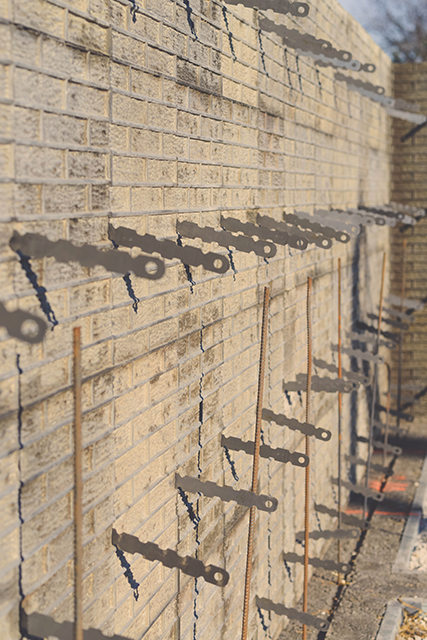
Baty noted one of the key concerns at this point is making sure that short-cuts aren’t taken in the building process because of the shortage. For example, contractors may opt to use fewer ties in the forms, while others might try alternative tie systems that are not tested nor designed for the loads. Deviating from proven industry methods may compromise the structural integrity of the forming system and put worker safety at risk.
While some additional production is proposed by steel mills committing to increases of the roll stock required to stamp the ties domestically, it will likely be the end of second quarter or early third quarter for the market to realize the temporary impact of the increased supply. Likewise, the timing of imported inventory into the U.S. market remains challenged and the potential impact will not likely offer much relief until mid-second quarter.
“Future meetings are planned for updating those with specific interest in monitoring the progress and to continue bringing the right minds together to do what we can to solve this problem,” states Baty. “In addition to our attention on supply, we also are working to educate the marketplace of the safety risks that must be considered when attempting to stretch inventories by reducing tie usage or attempting untested or provisional replacements.”
CFA will be hosting an informational webinar on March 17 to further inform Association members of this situation, as well as recommended steps. Contractors interested in learning more about this situation are encouraged to reach out to the CFA either by calling 319-895-6940 or by email directly to Baty at jbaty@cfaconcretepros.org.
About the CFA
The Concrete Foundations Association of North America is a membership organization and serves as the leading voice for today’s cast-in-place contractor. www.cfaconcretepros.org.
# # #
Dan Durant Named VP of Sales Eastern North America as MAX USA Corp Continues to Expand
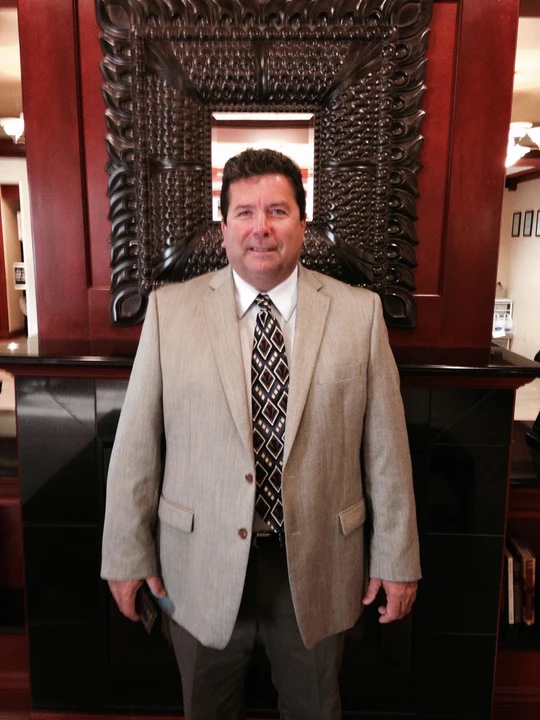
For the past five and a half years, Dan Durant has worked diligently to expand his skills and knowledge of how MAX USA Corp. can exceed and support the construction markets’ needs with its growing line of industrial tools and innovative solutions. Originally coming onboard as a Regional Sales Manager in 2015, Dan has continued to work with and encourage each of his team members to help achieve ideas and goals into new and expansive opportunities.
From working with steel reinforcing contractors to plan safe and cost-effective construction strategies by integrating rebar tying technology, to demoing high pressure PowerLite tools on jobsites to overcome PAT and GAS restrictions, Dan has put his clients needs front and center – His ability to ensure and see through that they have the tools needed to provide a reliable solution no matter the means necessary is what lead him to this new endeavor through MAX USA Corp.
“Dan’s continuous record of successfully growing sales at MAX coupled with his ability to nurture and lead his coworkers makes him the natural choice for the role of Vice President of Sales Eastern North America. We thank him and his family for the contributions he has made and continues to make daily.”
– John Dominice, Senior VP of Sales, MAX USA Corp.
Innovative Product Reshapes Concrete Use Forever

By SARAH WRIGHT | The Municipal
In areas with harsh winter conditions, concrete takes a beating. Common deicers can result in calcium oxychloride growth that rots concrete joints, and freeze-and-thaw cycles cause surface delamination or scaling. Such deterioration proves frustrating when it occurs well before the concrete’s life expectancy is up. However, an innovative product is available to solve this issue. PAVIX, a unique dual crystalline waterproofing product, penetrates the surface of cured concrete to fill and seal the pores and capillary voids. This advance technology results in not only longer-lasting concrete but also the ability for municipalities to show their constituents they are pursuing environmentally friendly options.
Being 100% green with no volatile organic compounds, PAVIX uses dual crystalline diffusion technology. When hydrated, the hydrophilic crystals expand while the hygroscopic crystals grow toward moisture. Together, they mitigate water/vapor; resist deicing chemicals, jet fuel and oils; and eliminate bacterial growth. When dehydrated, the crys-tals shrink to allow for faster evaporation.
Because of its active chemistry, Vice President of Sales and Mar-keting for ICC Distribution Group Mark Chew added PAVIX actually has a secondary benefit: During a rain event, it self-cleanses con-crete, purging previous deicing chemicals out of the surface, while protecting against and purging future oils, fuels and other concrete contaminants out of the capillaries and off the surface.
“When the crystals are in their hydrated phase, they are generating a small amount of energy or activity,” explained Chew. “Because of this absorption and diffusion activity, water cannot penetrate the pores and capillaries, so the ice will be there, but with much less adhesion.”
Seeing is believing, and Chew described one client who had opted to only treat half a parking lot with PAVIX as a test. Afterward in early spring, a rain event occurred. Their customer sent ICC a photo. “It looked like it’d been Photoshopped,” Chew said. “The side that had been treated was 100% dry. On the untreated side, there was water and slush that refroze when the temps dropped again.”
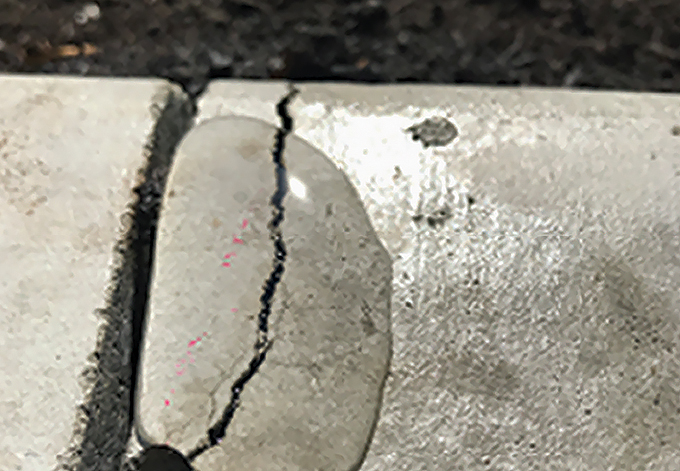
ICC Distribution Group and International Chemcrete have had this advanced technology “PAVIX” put under some of the most stringent testing by several third-party labs, the CP Technical Center at Iowa State and Brunel University, London, England. Most currently much more advanced testing taking place at the University of Mis-souri-Kansas City. Several of these test results are available at www. iccdistributiongroup.com.
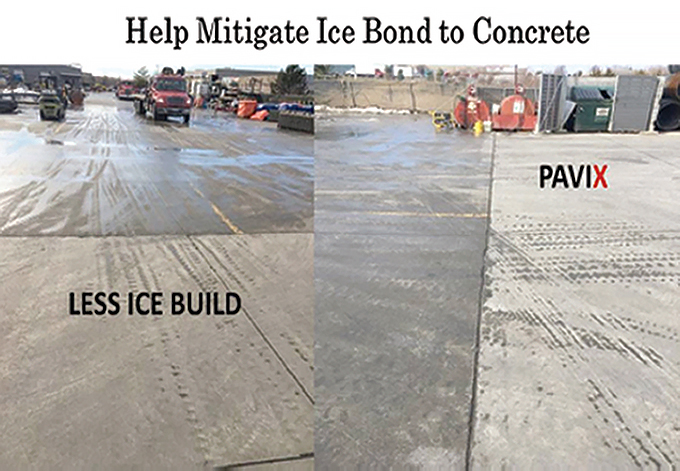
For time-crunched cities struggling to find workers, PAVIX saves time and headaches by reducing maintenance demands and offering ice mitigation that can boost the performance of more green deicers. Or use less of the current deicers because they will now be much more efficient. The de-icing chemicals will be on the surface not in your concrete.
“Once applied, retreatments are not required as long as the surface substrate is intact, we have Midwest parking lots and bridges 15 years later with no retreatment performing really well,” Chew stated.
Bob Schiesl, assistant city engineer for Dubuque, Iowa, said keep-ing concrete in good condition is a challenge for his Midwest city with its climate, and upon learning about PAVIX, Dubuque had to test it out.
“The city of Dubuque uses it on all of our bridge decks,” he said. “We’ve also applied it to some street projects where we did a dowel bar retrofit, reinforcing the dowel joints and protecting them from deicing chemicals.”
City workers applied the PAVIX on the bridge decks themselves while one of the city’s contractors handled the dowel joint retrofit. “We’re really pleased with the product,” Schiesl said. “It was easy to apply.”
The city currently monitors areas that have been treated with PAVIX to judge performance over time, with Schiesl noting, so far, every-one has been pleased with what they are seeing, and there is hope about finding cost savings over time. “If we can get longevity out of our bridges, that is a massive benefit,” he said.
Quick PAVIX Facts
How long does PAVIX last? Pavix product application is long lasting. Once placed, the crystals remain active indefinitely. Its unique crystalline growth structure will not deteriorate.
How resistant is PAVIX to chemicals? Based on indepen-dent testing, PAVIX is not affected by a wide range of chemicals, including mild acids, solvents, chlorides and caustic materials. It is resistant to oils and jet fuels. And it protects against glycol and deicing liquid as well. PAVIX greatly enhances glycol reclamation effects, and it has the ability to shed glycol off of the surface to the reclamation tanks.
Is PAVIX affected by temperature, humidity, ultraviolet and oxygen levels? Humidity, ultraviolet and oxygen level (oxi-dation) have no effect on PAVIX. As humidity increases, the crystals actually swell in the capillaries to block moisture from entering the capillary.
Does PAVIX protect reinforcing steel? Yes. By preventing the intrusion of chemicals, salt water, sewage and other harm-ful materials, PAVIX protects concrete and reinforcing steel from deterioration and oxidation. If corrosion is already present, it will slow the process by not allowing further moisture to enter.
Can PAVIX be applied against hydrostatic pressure? Yes. Because PAVIX is not dependent upon adhesion to the concrete surface and instead becomes an integral part of the concrete mass through crystallization, it is capable of resisting hydrostatic pres-sure from either side (positive or negative) of the concrete.
Is PAVIX used to waterproof cracks, joints and other defects in concrete? Yes. PAVIX has a specific repair system that utilizes its unique crystalline waterproofing technology to stop water flow through up to 1/16-inch cracks. In the case of expansion joints or chronic moving cracks, a flexible sealant is recommended.
Is PAVIX suitable for use on surfaces other than concrete? PAVIX is totally compatible with the chemistry of concrete, whether poured in-place, pre-cast or concrete block. PAVIX may also be used on mortar, limestone, sandstone, plaster, stucco, efis, terrazzo, exposed aggregate and any sand aggregate cement combination.
Can paint and other finishing materials be applied over a PAVIX coating? Yes. Paint, cement purge coats, plaster and stucco can be applied or installed over concrete protected with PAVIX.
What are some typical PAVIX applications? PAVIX can be applied to any concrete surface. Applications include bridge decks, airport runways, aprons, taxiways, rams, deicing areas, hangars, tunnels, parking structures, sidewalks, foundations, roof decks and exterior below grade construction.
What is the recommended application rate for PAVIX? Typically, a coverage rate of between 150 and 200 square feet per gallon will provide ample coverage. Consultation with the manu-facturer’s technical department or a local PAVIX representative for assistance in determining the appropriate dosage rate based on specific requirements and condition of your project.
How easy is it to apply PAVIX? One single application of PAVIX is all you need. PAVIX is the viscosity of water and applied so. Using a low PSI sprayer (backpack or boom) make it simple to apply. You can apply PAVIX on freshly poured concrete at de-bleeding/de-watering stage as long as there’s a curing compound used immediately after. Thus, the construction process is not slowed.
A New Year Brings Forth New Leaders
Introducing the New Board Members for the Concrete Foundations Association
It is hard for many to believe how quickly the time flies, yet here we are in February with half the fiscal year already behind the Association and a race to the finish already in mind. This race has more than one meaning and significant implications. Behind is the start of the COVID-19 pandemic that has gripped the globe. Ahead is the promise of an end to the tumultuous time determining the best ways to protect crews and customers as well as vital office staff. Behind is the first ever virtual convention that delivered a new description of what in-person means. Ahead are the possibilities to use this expertise and experience to revise what it means to attend events like Concrete Foundations Convention and other related activities, like Foundations Academy this month, whether you can travel, or you must choose the convenient opportunity to arrive virtually.
These are among the ideas that have become the framework for the inauguration of the newest faces to the Concrete Foundations Association. They are leaders in their respective companies from the largest geographic separation ever to take on the challenge of Board member of this organization. They enter this arena with fresh perspectives, diverse backgrounds and engaging energy to be part of the present as well as the immediate future. They have participated in the first strategic planning effort in nearly a decade followed by a month of intensive task force work to give the Board a wealth of goals to begin directing into motion to further the reason why each of you are #CFAConcretePros.
With a hard six months behind them, it is time for you to get to know these five new members of the CFA Board of Directors. This is your opportunity to find out how much like you they really are and how they see themselves stepping into their roles so quickly. Help me welcome Amanda Kurt of Kurk, Inc. (Union Grove, WI); Aaron Witmer of Gravel Conveyors, Inc. (Zionsville, IN); Mike Kana of Doggett Concrete (Charlotte, NC); Ryan Ekedal of Ekedal Concrete, Inc. (Irvine, CA) and Marty Paddock of Purdy Concrete, Inc. (Lafayette, IN).
________________________________________________________________________________________________

Vice President and Managing Partner
Kurk, Inc.
Certified Contractor – Member
Union Grove, Wisconsin
“we are committed to getting the job done, on time, within budget, and accurately – come hell or high water“
Amanda Kurt
When asked how I arrived in the concrete industry, it is easy for me to respond, “I was born here…literally.” My dad, and now business partner, John started Kurk Concrete (now Kurk, Inc) in 1989 and I came into the world in 1990. Ultimately, I would say my dad got me into the concrete and construction industry unintentionally. Growing up, all three of us sisters would visit the office and different job sites with our dad. I’m the only one who was interested in construction.
Originally, I never intended to join the business, instead I had intended to become a Structural Engineer, ideally getting my PE sometime around now. I went to school at Milwaukee School of Engineering, studying Structural. Comparing our senior design project and my internship with Veolia, I realized I didn’t want to be restricted to an office and desk and wanted to be on construction sites. After college, the job market was pretty grim. I don’t recall exactly what or why, but at that time there must of have been some sort of need and opening for me to come work in the office at Kurk.
This decision was largely based on recognizing my life passions that were developing. High on my professional list is providing and accommodating a work life balance. It is important for me to help maintain a work environment which allows employees to provide for their families and spend time with their families, including me. Also, there is raising awareness about all careers in construction, specifically to the next generations of tradesworkers and minorities in construction. Finally, I believe in servant leadership – within the community, the business, and within my professional network.
As I prepared to join my dad here at Kurk, Inc. it was important to put forth a consistent statement to our customers and our employees. Officially, we say “we are here to partner with you and build a strong foundation together.” What this means internally to us is that we are committed to getting the job done, on time, within budget, and accurately – come hell or high water. We’re here to work with you and partner to solve any problems that may arise. Beyond great employees, our assets include an array of concrete support equipment and excavation equipment. We’re happy to leverage these assets and our network to get the job completed in the most cost-efficient way possible. This is our commitment to our mission.
I am ready to take on this role as a board member for this great Association. When I think about becoming a member of any type of organization or association, I need a real answer to the question “Why is membership beneficial to me and Kurk Inc.?” That answer isn’t always tangible and obvious. I look to the CFA to advocate for concrete contractors across the country regarding building codes, guides, and standards of construction. Next, I look to programming and information including networking opportunities, certifications, and formal or informal courses. Becoming a board member gives me a platform to find new ways to bring as much knowledge and information from my colleagues into my business while building on recent success to make it more viable to leverage the virtual side of the network—virtual professional groups, meetings, and education for even more interaction possibilities.
It is important for business owners to analyze what may be on the horizon. I see some sort of disruptor entering the building industry, and ultimately the concrete industry, in the next few years. I’m not sure what it is, but I think we’re due for something big. The industry is teetering on the tipping point of millennials coming into decision making positions and I think it’s going to affect the industry immensely.
________________________________________________________________________________________________
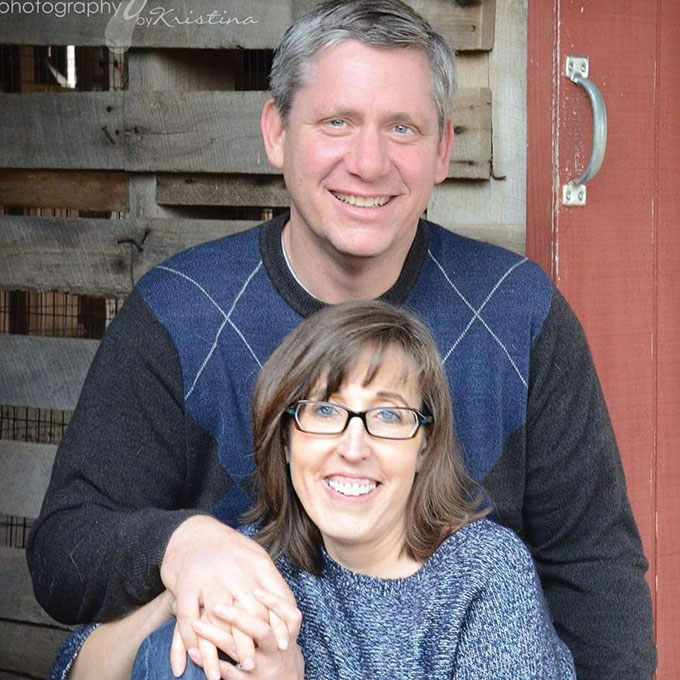
Marty Paddock
Wall Manager
Purdy Concrete, Inc.
Contractor Member
Lafayette, Indiana
“I see them as more than money, seeing them for who they really are“
Many years ago, I was approached by a company that knew my reputation in the business that I had. They were hiring me to be a salesman. Fortunately, that was not what I thought they were hiring me for otherwise, I would have turned them down. But the LORD knew what HE was doing in blinding my eyes to that. I thought I was there to help the head man to do whatever he needed. When they Informed me six months later it was time to find business, I was shocked. I informed them I was not a salesman. They told me they weren’t looking for a “normal salesman,” just someone who would be a straight shooter, which was what they were convinced I was. Well, it worked. Which also meant I had to learn everything I could about the industry. This industry and Purdy Concrete, Inc. has been good to me.
I am confident that my abilities stem from what I’m most passionate about in life. Firstly, my LORD JESUS CHRIST to Him I give all glory and honor and humble myself to His plans above mine. Next, my wife and our six kids. They give me the motivation to be a better husband, father and role model in this life. Finally, softball. The passion I play with and the competitive nature that comes from being on the field of play is a natural parallel to the effort I put forth in business. On the softball field you are alone and with a team. Your mistakes are clearly visible and yet there are others there to support you through them with and vice versa you for them…all working toward a common goal to achieve while enjoying being together for the effort.
Ever since that aha moment here at Purdy, my approach to business has been a constant I’ve maintained. I have a straight-forward approach and never lie at any time. When asked a question, it is important for me to inform them “I don’t know,” if I don’t know. Then, I seek resources to help me find out what I don’t know and why I don’t know it. Our customers, I see them as more than money, seeing them for who they really are. That also means I will not do business with some because of who they are. Above all to know I stand in front of my LORD for what I do.
I have been connected with the CFA for a lot of years, though rarely taking the time to see how much I could truly benefit from it. Convention a few years ago in Williamsburg, VA was a pivotal moment for me where I was on the verge of being done, tired, worn out and convinced I may be outdated. That event reinvigorated me as I looked around and met a bunch of people with the same problems that I have. Even more importantly, they were all willing to share how they have dealt with some of those problems. The opportunity to join the Board of Directors here is to participate in that more fully and build ways for others to have this same experience more intentionally.
This is networking at its finest. It doesn’t come easy and it isn’t natural for most. However, when you take the chance, accept the risk and be present in the commitment, you begin finding nuggets. I have come to know these that make my life easier so that when I am with my family, I am not thinking about work.
________________________________________________________________________________________________
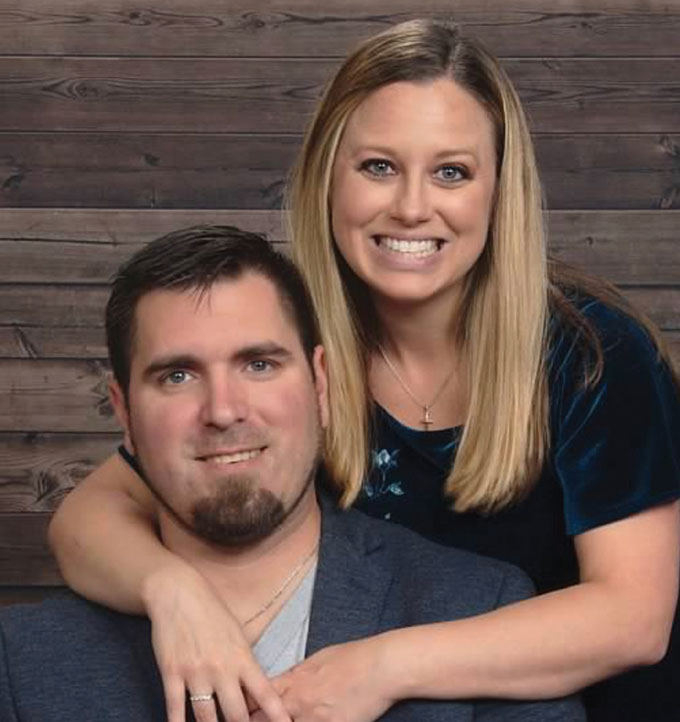
Aaron Witmer
Chief Operating Officer
Gravel Conveyors, Inc.
National Associate Member
Zionsville, Indiana
“I treat customers as if we were put on this earth to serve them“
The grandson of a contractor, I grew up in construction. I was climbing footers before I started school. I have poured concrete in two countries and countless states. I remember trying to move concrete panels before puberty, with little success, and by the end of high school I was a solid wall setter. By the time I entered my college years I was running a crew and I continued to grow from there. My entire professional career has been spent in construction, mainly concrete foundations.
I was always the guy that said I would never leave the field for a desk. Well, never say never because before I turned thirty, I found that my frustrations with how companies were run lead me to a desk in management. Leaving the jobsite trailer for a brick-and-mortar office was truly a hard decision, but my background gave me such an advantage that it led to success. Having worked in and with residential and commercial forms, from bridges and skyscrapers to every type of home has given me a unique and broad view of our entire industry, not just foundation walls, but the work that comes before, during and after.
I am not trying to sound cliche, but my passions are straight forward, God, Family, Country, and GCI and our customers. My church and my relationship with the Creator are the foundation of my life. I was raised in the Church, went to a Christian high school, Christian College, and married a woman of God. Our four-month-old son, Odin, was just baptized and we celebrated the best we could. My family is everything to me, they have afforded me the blessed life that I live. GCI is my home, and its employees are my family. From here, my work life takes off and is further refined by my private passions, which include grilling and smoking food, mostly meat, and handguns. I spend countless hours in front of my grills, its therapeutic in contrast with the rest of my hectic life. I am also a very avid handgun enthusiast, particularly Glock handguns and Glock shooting competitions.
When it comes to business, I have always known that to value and treat your customers right you must use servant leadership, it is my complete motto. I treat customers as if we were put on this earth to serve them. Obviously, this is easier said than done. GCI has truly taken this to heart, except for those people that cannot be and should not be allowed to treat our team in any aggressive or negative manner. Our industry allows for more than many, but other than completely rude or aggressive people, we tolerate anything to live our pledge to serve.
Community and growth are two characteristics I always look for in anything I give my time to. As I responded to the nomination opportunity for Board service, I asked myself, is there a group of thriving like parts in the Association? Can this Association help me grow, both in business and in education? Finally, do I have anything to offer in return? I have found time and time again that these can all be answered absolutely, YES. This is a powerful network of colleagues.
Looking forward my goals are to form many new relationships, educate the industry about GCI’s role in the foundation business, and grow this community to the actual size that it should be. As those of us in the industry know, the North American continent is covered by small foundation contractors that are a true backbone of an industry so necessary to the American way of life, but these contractors have a very small voice in an enormous and important industry. It is a way of life, one I grew up in and love, and hope to move forward and improve upon.
If you ask my wife, her goals are for me to not work 75-hour weeks and spending more time with the family. She understands my desires and needs to continue to grow GCI and improve upon my passion, the residential construction industry. Together, we will give this team approach our all.
________________________________________________________________________________________________
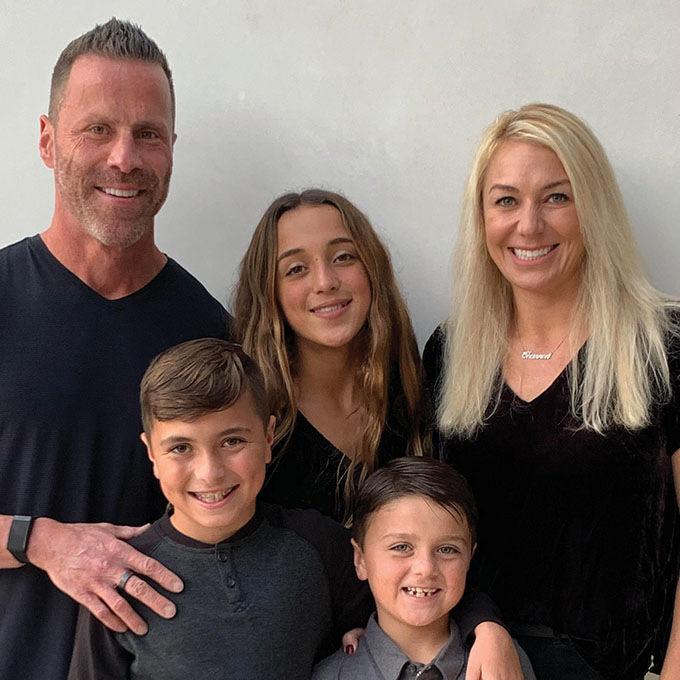
Ryan Ekedal
President
Ekedal Concrete, Inc.
Contractor Member
Irvine, California
“It is so important that each and every interaction is laser focused on providing quick responses“
I am a second-generation contractor who was born into the concrete world and it’s been my life ever since. My Father started Ekedal Concrete & Masonry back in 1980. From a very young age, I was around the business and concrete, and exposed to the job sites, people, and life in general in the concrete industry. I spent my early years as an apprentice carpenter, concrete pumper, and estimator before heading off to college. I graduated Sum Cum Laude with my BS in Construction Management from Everglades University in Florida and added an MBA from Pepperdine University in 2019.
I am very passionate about health and fitness as well as self-improvement. I am also passionate about anything and everything related to leadership. I really enjoy coaching and giving back to people, especially children. Managing the workforce is certainly included in this passion, seeing the opportunity to coach, train, educate, and help them advance their careers.
Customers also need educating. Without customers, though, there is no business! I treat every client or customer as if they are the only one I have. It is so important that each and every interaction is laser focused on providing quick responses to any questions, as well as making sure everyone leaves the conversation knowing they were heard and are being taken care of. It is so hard to find the right client in a competitive market so when you do you must keep them! That one client could very well be sending you repeat business over the next twenty years, or they may be the one that refers you to their neighbor or friend, your next “right” client. I believe it is also very important to make sure you are transparent and approach their project with an open book, as it relates to their project. This is especially true on the financial side.
My dad had not joined our company to the CFA until I came on board full time. What drew me to want to become a member of CFA was seeing so many similar companies from all over the country. This diverse group of leaders were freely sharing their ideas and concerns as it relates to their businesses. This was a major advantage to be able to learn from one another and help level each other up to be better business owners or managers. Now, as a Board member, it is my goal to not just participate in that more fully but to help open opportunities for others not already members to find this benefit. My main outlook for the next five years would be to have a handfull of companies that I have visited out of state in the hope of learning from one another. This is the premise of CFA’s mixed networking groups and I look forward to becoming involved in one.
The next two to three years looks to be even busier than we currently are as it relates to concrete construction. Housing permits and development in our market continue to race forward. Our company needs to continue to be positioned as the leader and grow to accommodate the customer needs without risking a poor leverage position unnecessarily for the longer future.
________________________________________________________________________________________________

Vice President of Business Development
Doggett Concrete, Inc.
Certified Contractor – Member
Charlotte, North Carolina
“Our people and reputation are our two greatest assets“
Most of my professional career has been in the sales and business development arena working as a manufacturers’ representative along with management in the construction staffing industry. Although not a ‘lifelong’ concrete purist, I have taken advantage of the experience we have in our company to understand construction concepts and how to best position our organization in the market. I am surrounded by folks in our company that make it easy to learn about our craft. Also, the professional experiences I have worked through in the past have helped me introduce growth strategies for our business allowing us to continually evolve and adapt to multiple markets.
When considering how my career has progressed, I turn to passions I have built over this time. The first is growing our safety & leadership culture, without it we put the greatest risks to business survival in play. The second is continuing the growth our company has had over the past few years. Finally, improving our efficiency in the field and office as today’s market is growing at such a rapid pace that we don’t have time to meet growth with growth. We must first maximize our efficiency which will allow company growth to happen at a more reasonable pace.
Customer approach has always been a strength for me. I have found that you must always listen first. We try to understand what our clients want and need. Each customer is different in how they approach their project, sometimes even their approach to different projects, and we need to understand what is most important to them. We seek to answer Is it quality? Speed? Time? All the above? Our people and reputation are our two greatest assets, and these are the primary reasons we as a company continue to do repeat business with our customer base. I feel our clients keep coming back to us because they know what they are going to get for we set the bar high for ourselves. This type of performance allows us to grow with our customers and leverage our past.
Doggett Concrete has been a member for over twenty-five years now. I have learned that the relationships we have with other members are invaluable. The Association allows you to be “in the room” with top concrete professionals from across the country who have been there and done it and take the time to understand you issues and perspectives to carefully pass along their knowledge. When you associate yourself with the right people, you put yourself in the driver’s seat for success. You can learn from others those things will allow you to navigate through difficult decisions all while leaning on the membership base. This is extremely helpful whether you are a one-crew company or a multi-state organization. There are countless resources inside the CFA family to help you succeed.
As our organization grows, I look to associate our group with people who our going through similar challenges. In the Concrete Foundations Association, we are able to work with companies of similar size to help solve internal and external challenges; from safety concerns and regulations, to hiring challenges and workforce development. Getting involved and plugging more of our team members will help our company and the CFA. Having one person from our company is helpful; however, with multiple people participating in CFA meetings and education events, we will be set to grow even bigger and better from a leadership and cultural standpoint.
Comparing Innovative Concrete Material Options for a Residential Home

It’s no secret that the unparalleled COVID-19 pandemic has had some unpredictable impacts on industries worldwide. For the first time since 2010, the cost of construction has fallen. However, material costs are rising.
In June alone, raw material costs rose by 2.2%. The price of lumber jumped 16.5% in July and is up 19% overall. These trends are frustrating for those in the construction sector.
Social distancing and safety concerns are high, and the economy isn’t exactly stable. These conditions have resulted in more homeowners and businesses hitting the pause button on their construction projects.
So, the demand for construction is lower, leading to a decrease in construction costs. However, buckling supply chains and trade tensions have caused material prices to rise.
This unfortunate combination leads to workers in the construction industry scrambling to afford the materials they’ve always used. Thankfully, there’s a material whose price isn’t rising and whose functionality is varied enough to serve as a substitute during these trying times.

That material is concrete.
The Advantages of Concrete
In general, concrete boasts many outstanding advantages as a material – especially for the average homeowner and residential builder.
Concrete is:
- Cost-effective
- Incredibly Durable
- Naturally Resists High Temperatures
- Pest-Resistant
- Can Be Painted or Polished
- Low Carbon Footprint
- Doesn’t Rot, Burn, Or Rust
- Impressive Insulation Qualities
- Unparalleled Longevity, Strength, and Resilience
- Low-Maintenance
- Recyclable
These advantages are more apparent in some uses than others. While concrete is traditionally used in slabs, sidewalks, and basement walls – are there other places to use it, too?
How can you use concrete in a residential home?
The Many Innovative Uses of Concrete in a Residential Home

Here are the top seven innovative uses for concrete inside a residential home.
- Wall Systems – Today, you can build the entire wall system, basically the whole home, out of concrete. These concrete block homes are gaining popularity for their environmental advantages, disaster-resistance, durability, and energy-efficiency. Rather than using standard walls, these homes use insulated concrete forms (ICFs) or concrete blocks.
- Framing – With the cost of wood on the rise, there’s an influx of homeowners switching to structural concrete shells instead of the traditional framed home. This technique provides a unique home that has higher sustainability, resistance, and longevity.
- Countertops – Concrete can also be used for countertops. It’s a fantastic, cost-effective alternative to natural stone, and it can be painted and polished to look like any countertop type. Since it resists heat and rot, it’s a perfect material for kitchen or bathroom counters – as long as it’s properly sealed.
- Flooring – With the cost of wood on the rise, we might see a drop in demand for hardwood floors. Thankfully, concrete is an insulating flooring material. You can paint it to mimic natural wood or stone, and thanks to its insulating properties, it’s not as starkly cold as tile.
- Driveway – Concrete is a pretty conventional driveway material. However, thanks to stains, polishes, stamps, and techniques, there’s no shortage of unique driveway paving ideas out there.
- Fireplace – Since concrete naturally resists fire, it’s an excellent material for creating dreamy fireplaces in residential homes. It can look like natural stone, brick, or it can maintain an industrial appearance. Either way, concrete is a fantastic material for fireplaces.
- Stairs – Concrete is also a great material to use instead of wood for stairs. In fact, concrete stairs will be more durable and lower maintenance than wooden stairs.

Start Using More Concrete
Clearly, there are many innovative ways to use concrete in a residential home. We would wager to say that almost every single residential home element could be replaced by concrete.
There are several different concrete types on the market, ranging from your standard, Portland cement-based concrete to your high-strength and high-performance varieties. Ultimately, the right concrete will depend on the job at hand. Simply search for your needs, and there will be a concrete variety to fit your project’s needs.
Matt Lee is the owner of the Innovative Building Materials blog and a content writer for the building materials industry. He is focused on helping fellow homeowners, contractors, and architects discover materials and methods of construction that save money, improve energy efficiency, and increase property value.








